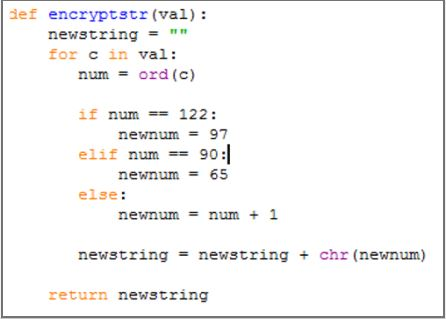

Using mon_timezones will give us a slightly smaller LazyList of the more common world timezones. There is a third way that we can get a list of timezones. Using pytz.all_timezones_set will give you a long set of type LazySet of World Time Zones with their long names.

There is another way we can accomplish this. Using pytz.all_timezones will give you a very long list of type LazyList of World Time Zones with their long names. We will be using Python 3.8.10 in this tutorial. Of course you must have Python and pip installed beforehand.
PYTHON ENCRYPTO FILE CODE PANDA INSTALL
If you do not have pytz installed you can do so by using the pip install pytz command at the command line. More interesting programs are below if interested check out them.To get a python timezone list, we can use the powerful pytz library.
PYTHON ENCRYPTO FILE CODE PANDA FREE
I hope you have understood the code if still, you have any doubts regarding the program feel free to Similarly the same is theĬase with decryption but we subtract or shift it backward. Lowercase and then suppose if it is uppercase(lies in the range of 65-90) then we shift the charactersĪccording to the key and if it exceeds the 90 then we should bring it back from 65.

The logic is that we will go through each character of the string and find if the character is uppercase or The keyword chr() is used to convert ASCII value to char. Try to rotate only in the lowercase() only. Lies in the uppercase values we will rotate it only in uppercase alphabets. In the code, we will check if the character is uppercase() or lowercase() using ASCII values and then if it “A” starts with the value 65, “B” has the value of 66 and so on till “Z” having value as 90. “a” has the ASCII value of 97, “b” has the value of 98 and so on till “z” having value as 122. We should know what are these ASCII values in order to encrypt and decrypt string the values start In Encryption ord() function is used to find the ASCII value of the given character.

The Encryption() function takes two parameters the string and the key to encrypt while the other Decryption function takes the key to decrypt the encrypted string. In the above code, there are two functions Encryption() and Decryption() we will call them by passing parameters. Here is the code for Encryption and Decryption using Python programming language. Print("Decrypted String : ",Decryption(k))Įnter the string to Encrypt and decrypt : Print("Encrypted String : ",Encryption(s,k)) Print("Enter the string to Encrypt and decrypt : ") Let string be “zap” and the key is 1 then “z” is replaced by “a”.Įncryption and Decryption of a string Implementation in Python def Encryption(s,k): Similarly, the same process is applied on the whole string if you get to the end of the string then you must start from the beginning again. Here I am changing the values of alphabets according to the key that is the first alphabet in the string is “S” so the value is shifted by 5 places from S that is “T”, “U”, “V”, “W”, “X” so the output is “X”. Now let us see simple encryption and decryption example and then go for the final implementationĮnter the string to encrypt and decrypt: Shravan Now, What is this ciphertext it is nothing but the encrypted text of your given message it is non-understandable but can be only understood after decrypting.ĭecryption: It is the reverse process of encryption so the ciphertext will be converted back to plaintext using the same key which we used earlier or maybe a different one. What is meant by encryption and decryption of a stringĮncryption: It is the process of converting a plain text string into a ciphertext. These are very interesting and are used for security purposes. Now what are this Encryption and Decryption, Why should you know about them? Well, In this post, we will learn a very interesting concept from cryptography that is Encryption and Decryption of strings using Python.


 0 kommentar(er)
0 kommentar(er)
